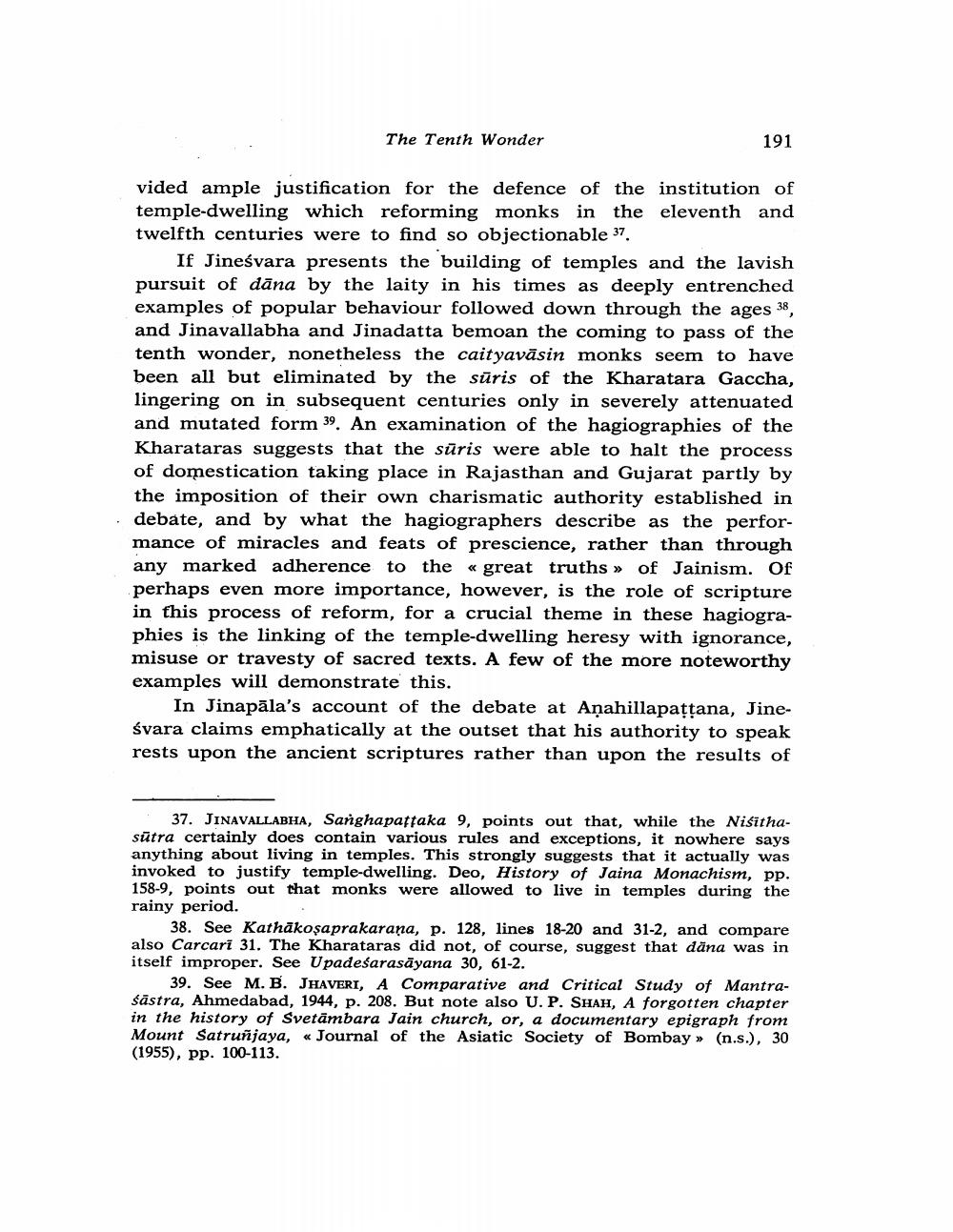________________
The Tenth Wonder
191
vided ample justification for the defence of the institution of temple-dwelling which reforming monks in the eleventh and twelfth centuries were to find so objectionable 37
If Jineśvara presents the building of temples and the lavish pursuit of dāna by the laity in his times as deeply entrenched examples of popular behaviour followed down through the ages 38, and Jinavallabha and Jinadatta bemoan the coming to pass of the tenth wonder, nonetheless the caityavāsin monks seem to have been all but eliminated by the sūris of the Kharatara Gaccha, lingering on in subsequent centuries only in severely attenuated and mutated form 39. An examination of the hagiographies of the Kharataras suggests that the sūris were able to halt the process of domestication taking place in Rajasthan and Gujarat partly by the imposition of their own charismatic authority established in debate, and by what the hagiographers describe as the performance of miracles and feats of prescience, rather than through any marked adherence to the « great truths » of Jainism. Of perhaps even more importance, however, is the role of scripture in this process of reform, for a crucial theme in these hagiographies is the linking of the temple-dwelling heresy with ignorance, misuse or travesty of sacred texts. A few of the more noteworthy examples will demonstrate this.
In Jinapāla's account of the debate at Anahillapattana, Jineśvara claims emphatically at the outset that his authority to speak rests upon the ancient scriptures rather than upon the results of
37. JINAVALLABHA, Sanghapattaka 9, points out that, while the Niśithasūtra certainly does contain various rules and exceptions, it nowhere says anything about living in temples. This strongly suggests that it actually was invoked to justify temple-dwelling. Deo, History of Jaina Monachism, pp. 158-9, points out that monks were allowed to live in temples during the rainy period.
38. See Kathākoşaprakarana, p. 128, lines 18-20 and 31-2, and compare also Carcari 31. The Kharataras did not, of course, suggest that däna was in itself improper. See Upadeśarasāyana 30, 61-2.
39. See M. B. JHAVERI, A Comparative and Critical Study of Mantraśāstra, Ahmedabad, 1944, p. 208. But note also U. P. SHAH, A forgotten chapter in the history of Svetämbara Jain church, or, a documentary epigraph from Mount Satrunjaya, « Journal of the Asiatic Society of Bombay » (n.s.), 30 (1955), pp. 100-113.




